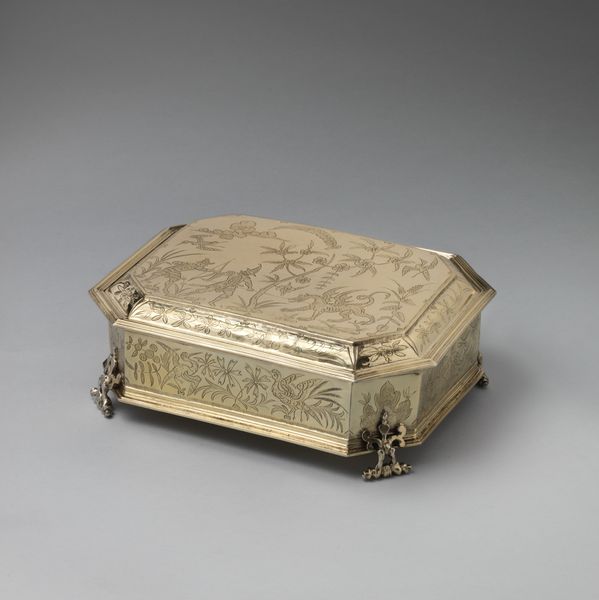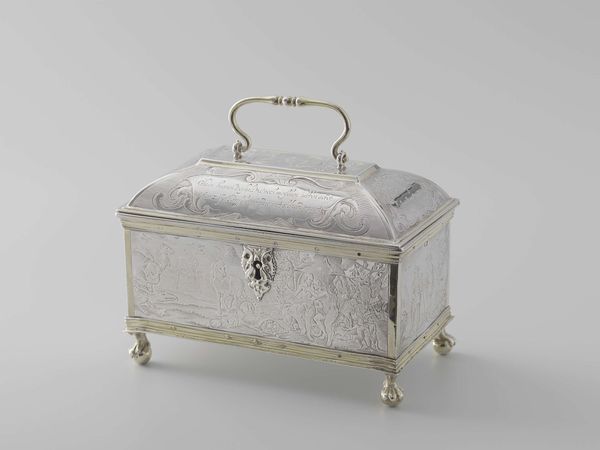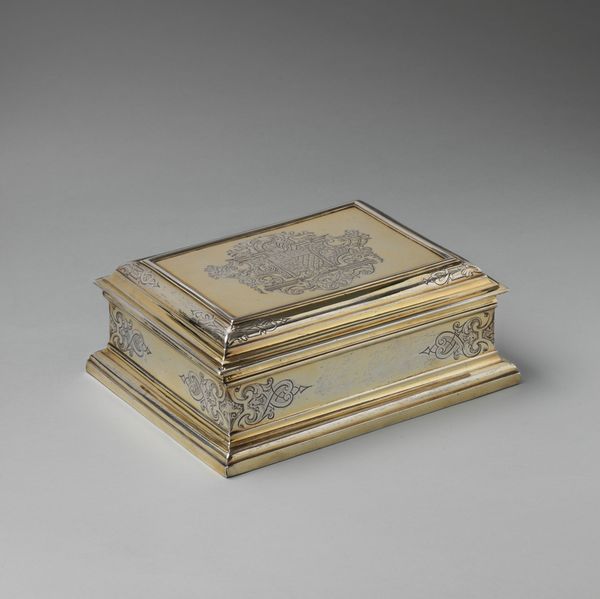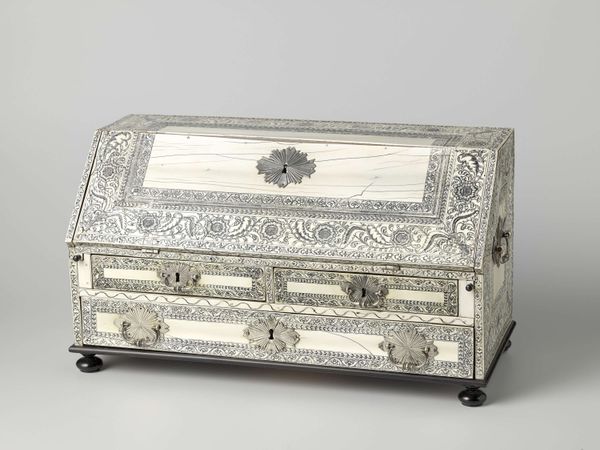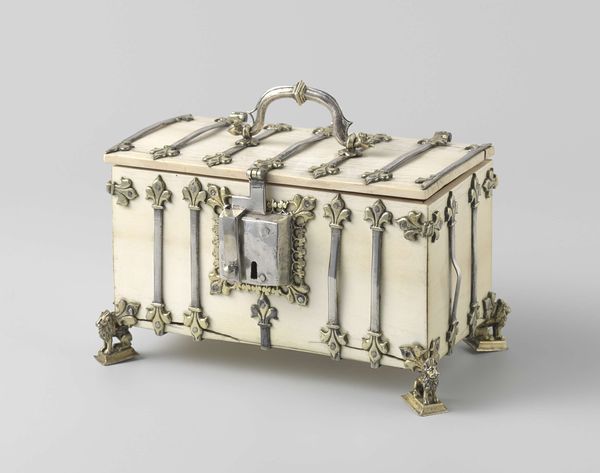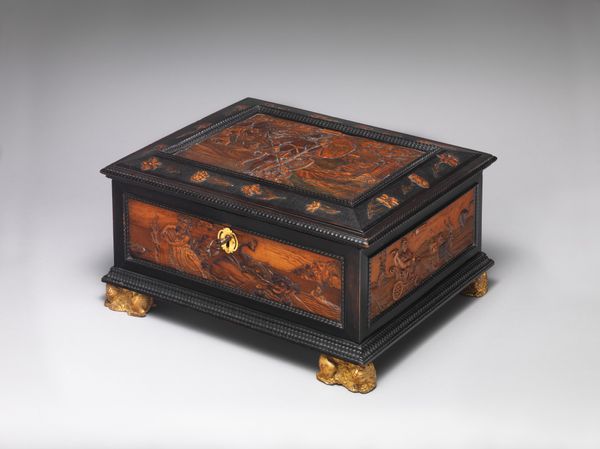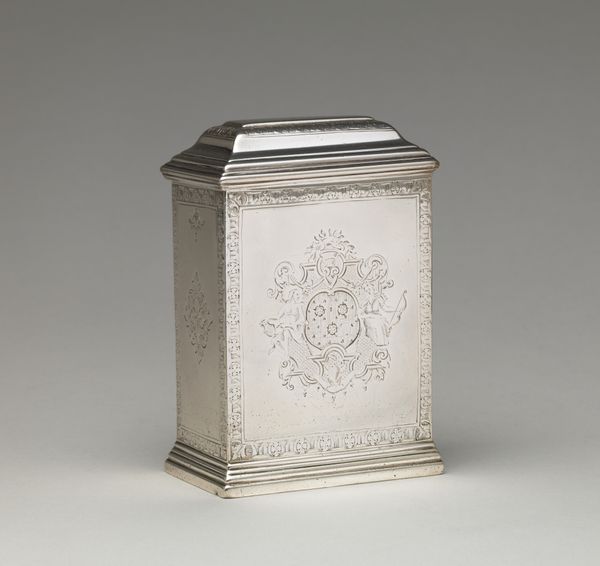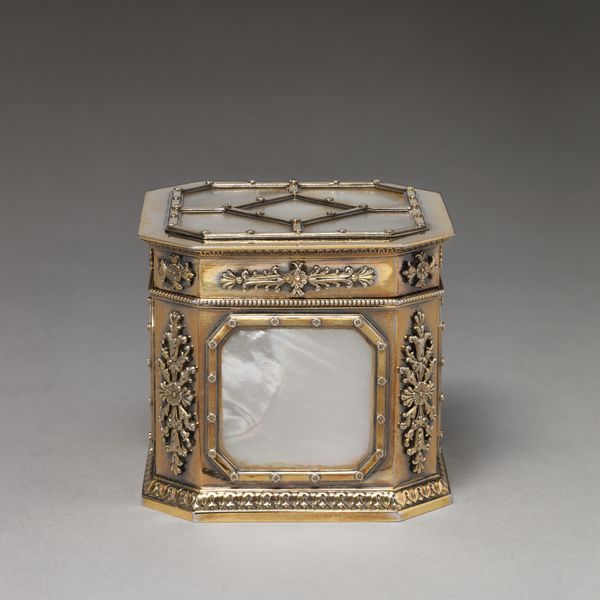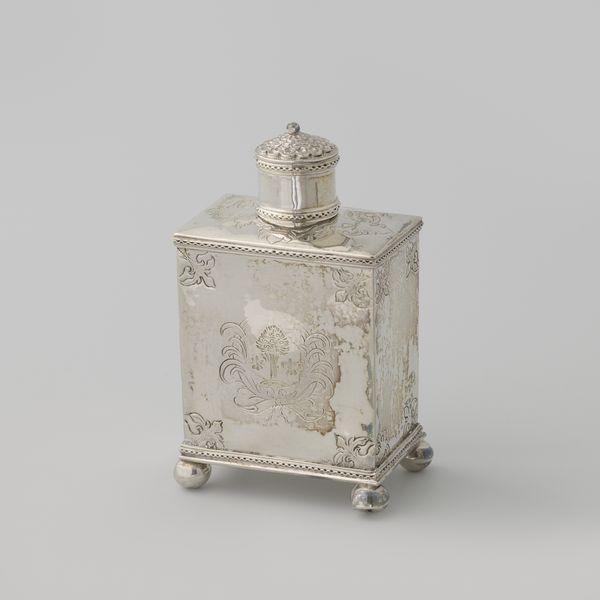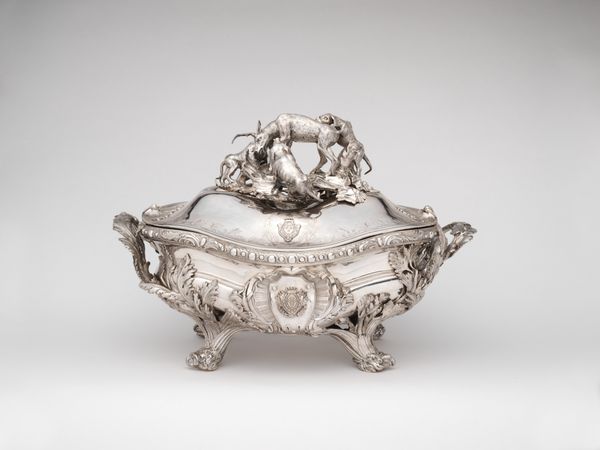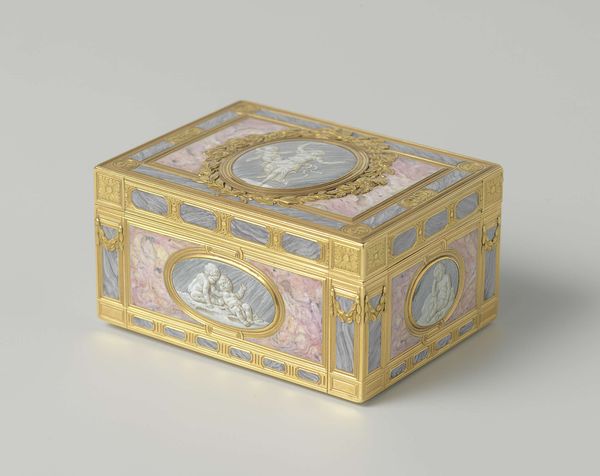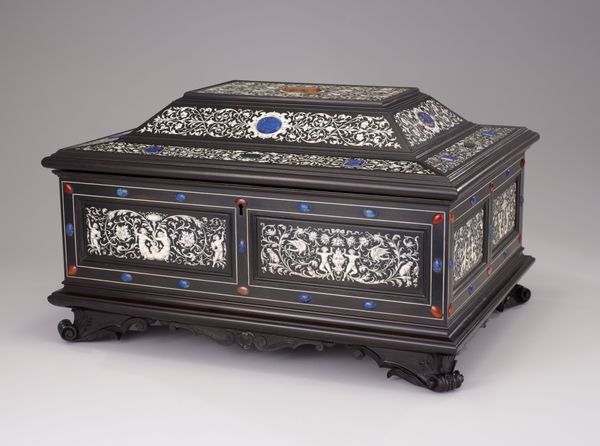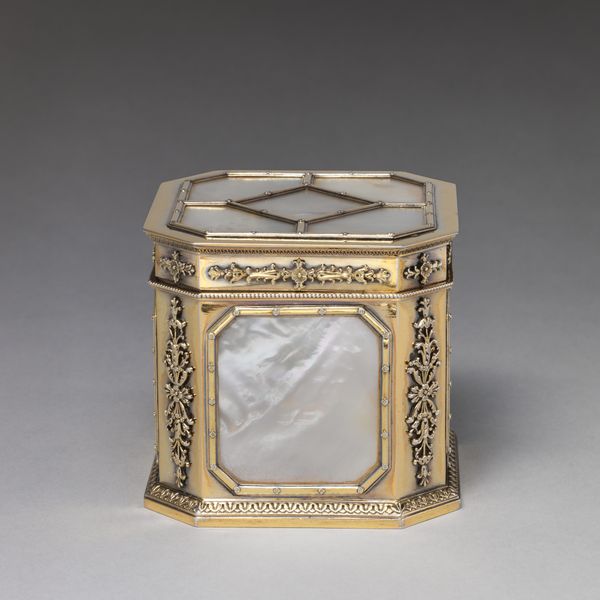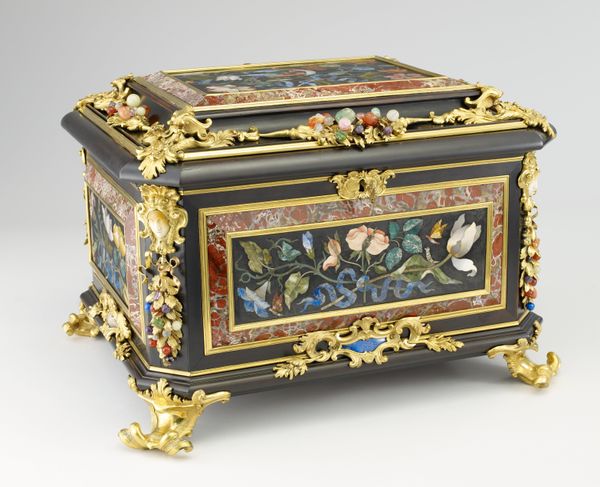
silver, metal, sculpture
#
silver
#
baroque
#
metal
#
form
#
sculpture
#
decorative-art
Dimensions: Width: 9 in. (22.9 cm)
Copyright: Public Domain
Curator: Before us, we have a "Casket," crafted between 1727 and 1728 by Charles Frederich Kandler. It’s a baroque piece, currently housed in the Metropolitan Museum of Art. The primary material is silver. Editor: It’s surprisingly restrained, isn't it? For baroque, I mean. I expected something more overtly flamboyant. It has this severe geometry, almost cold, yet the detailing softens it. Curator: Right, but look closely at how Kandler exploits the silver itself. The reflective quality is key, lending luminosity and life. This wasn’t merely about storing valuables, it was about displaying wealth and the silversmith's skill in manipulating a precious material. The process to turn metal into an object of beauty has inherent economic and labor implications to consider. Editor: Indeed. Who was able to afford such an item? What were their gender, social, or religious backgrounds? The "Casket" signifies access and exclusion. Such precious materials denote a connection to powerful colonial networks predicated on extracted labor and resources, which produced unequal distributions of labor, value, and power. It wasn't merely the wealthy elite of the 18th century. This also includes indigenous labor practices. Curator: Precisely. The chasing, the engraving, the casting of the feet—all meticulous, highly specialized crafts. This silver came from somewhere, it was processed by someone, fashioned by specific artisanal guilds in a definite locality, and purchased by a select clientele. Editor: And, of course, consider the role of gender. Were these used to store domestic tools by a mistress or love letters and other objects for the owner, like many baroque art pieces? Even the presentation suggests the owner has some degree of literacy, and access to a relatively secular object of private reflection in an era dominated by religious institutions. This highlights power dynamics that reflect cultural conventions about courtship or the gendering of domestic space in relation to privacy. Curator: Thinking about the decorative art style and the location itself as a container, it really represents a particular type of ownership over both materials and labor during this period. Editor: Absolutely. And interrogating its provenance forces us to confront uncomfortable histories linked to identity, inequality, and the enduring legacies of privilege that reverberate into the present. It challenges traditional views of artistic value. Curator: Looking closer, the more this becomes evident, and demonstrates how it moves between artwork and craft. Editor: Well, in the end, I find this dialogue allows us to see not just a pretty thing but a complex embodiment of a culture's values.
Comments
No comments
Be the first to comment and join the conversation on the ultimate creative platform.
